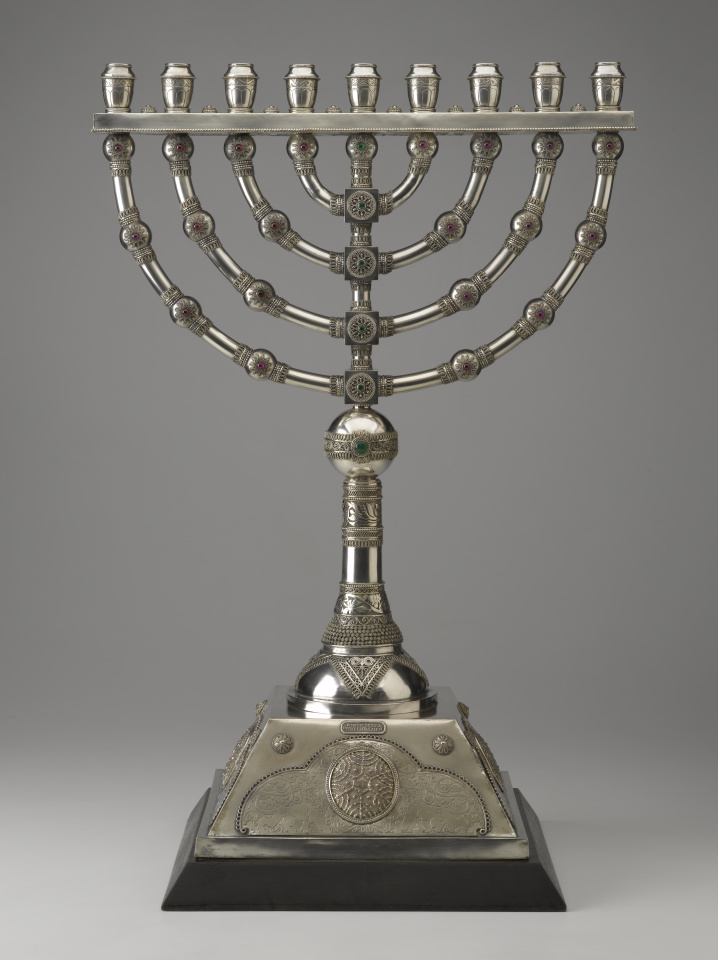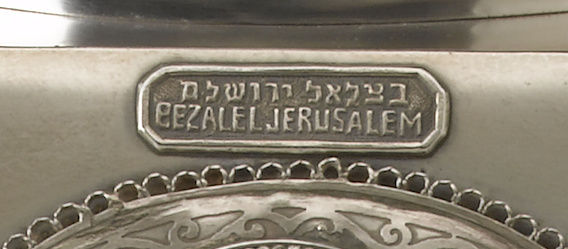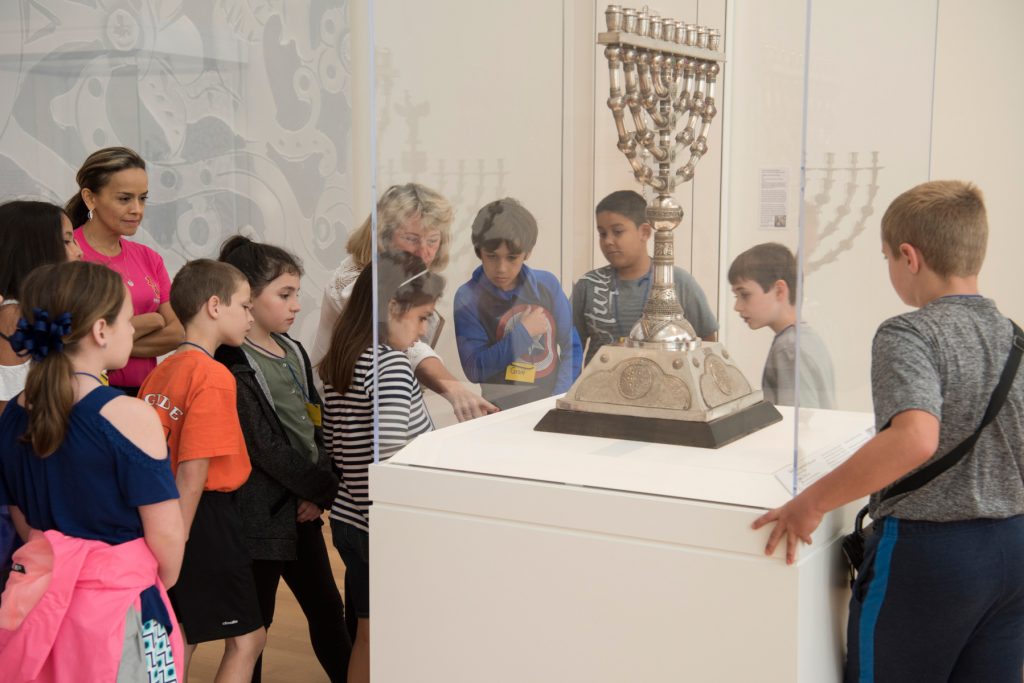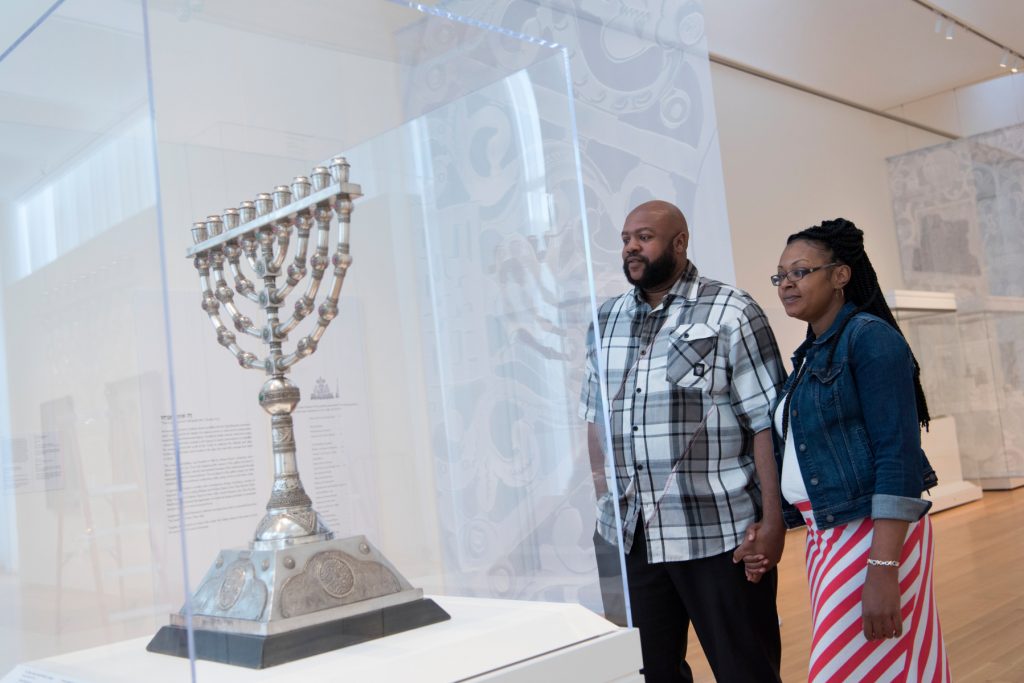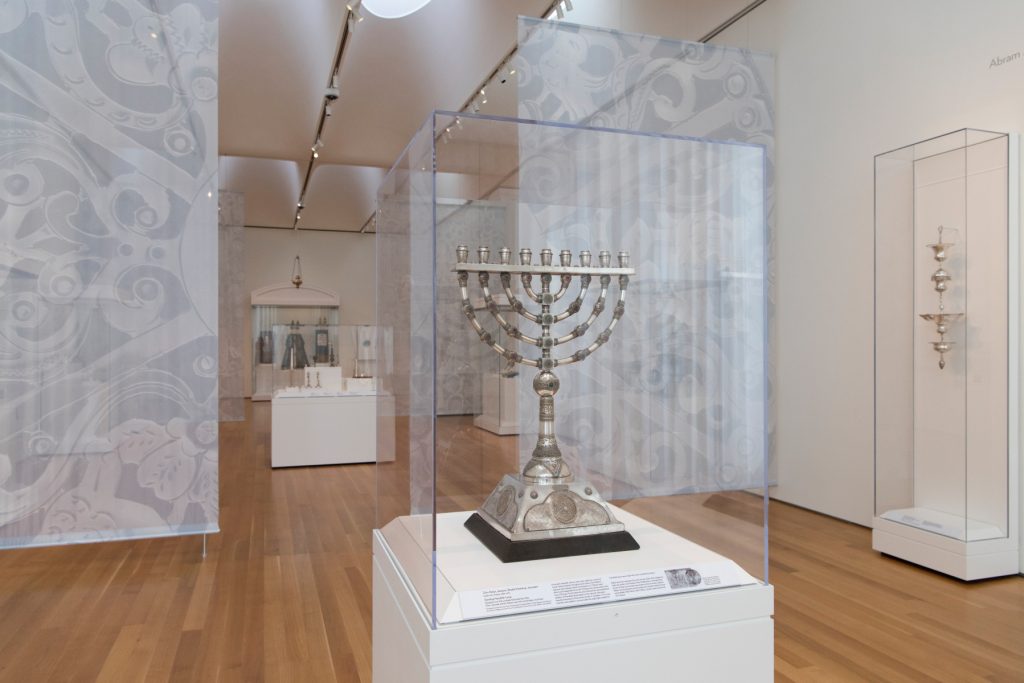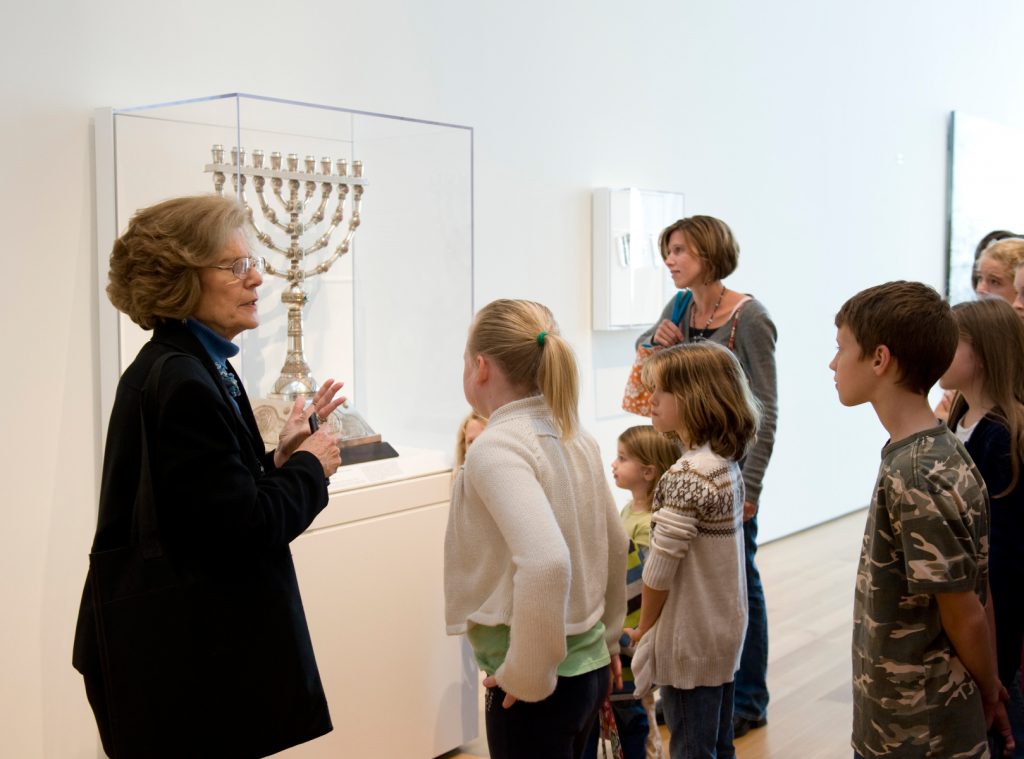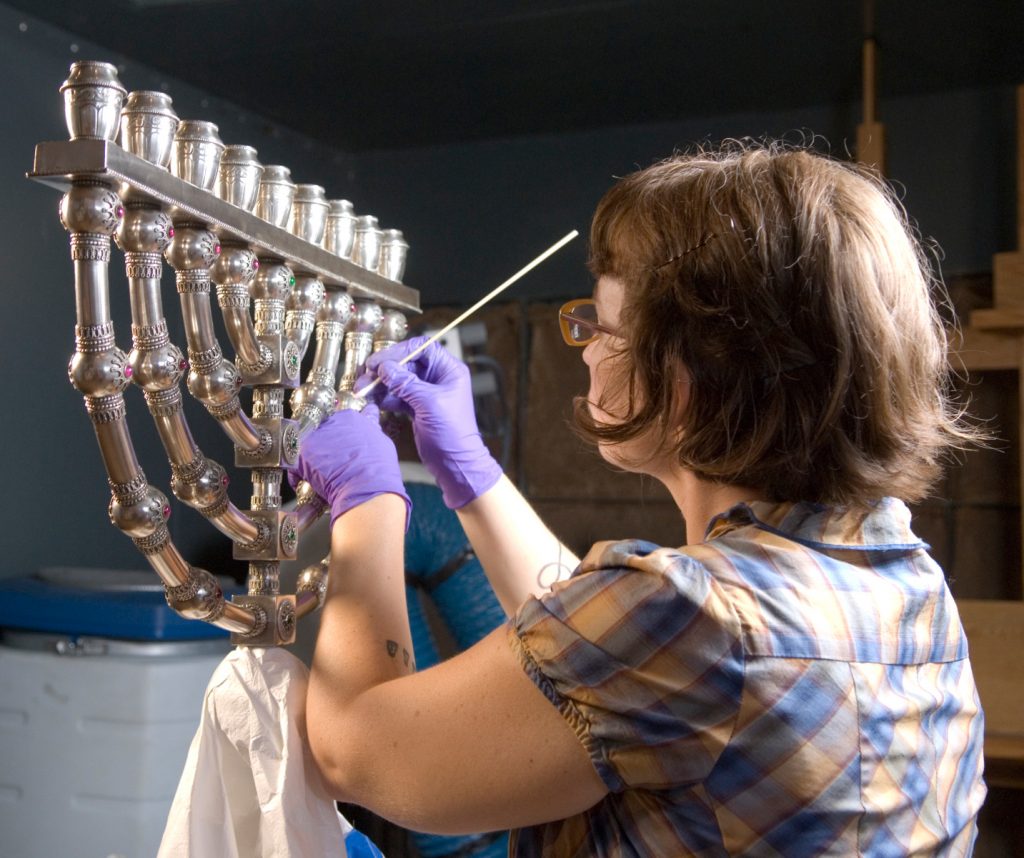Standing Hanukkah Lamp (work of art)
Artwork Info
Key Ideas about this Work of Art
- This silver Hanukkah lamp features repeating circular patterns and bands, and has an overall symmetrical balance.
- Hanukkah lamps come in a wide variety of sizes, styles, and materials. A Hanukkah lamp is also known as a Hanukkiah (ha-new-key-ah) or Hanukkah menorah. The word menorah (muh-naw-ruh) comes from the Hebrew word meaning lamp, light fixture (modern ceiling light or table lamp), or candelabra.
- Light, especially lighting candles, plays a role in many of the world’s religions. In addition to the lighting of candles on Shabbat, Hanukkah, and other festivals in Judaism, candles and the symbolism of light are important in Christian, Hindu, Zoroastrian, Buddhist, and other faith traditions.
- Ze’ev Raban was born Wolf Rawicki (Ravitzki) in Lodz, Poland, in 1890. He was a well-known painter, decorative artist, and industrial designer of the Bezalel school style. He is considered to be one of the founders of the Israeli art world. Boris Schatz, the founder of the Bezalel Academy of Arts and Design in Israel, encouraged Raban to move to Israel in 1912. Raban joined the faculty of the Bezalel school, and quickly took on a central role there as a teacher of repoussé, painting, and sculpture. He continued his teaching duties at the Bezalel Academy until 1929.
- The name Bezalel has great significance in Jewish history. Bezalel was the artist/artisan from the Hebrew Bible who was personally selected by God to oversee the construction of the mishkan (mish-kahn), the traveling Tabernacle that the Israelites carried with them during their 40-year travels in the wilderness.
Learn More
This large lamp is one of the masterpieces of Jerusalem’s Bezalel School of Arts and Design, the first modern design school of Jewish ritual objects. A lamp such as this one would have been used in a public synagogue or a private, wealthy household. This lamp takes the form of the menorah, the seven-branched lampstand of the ancient wilderness Tabernacle or mishkan, according to the description in the book of Exodus, and the Temple in Jerusalem. However, two more branches have been added to the Hanukkiah (Hanukkah menorah) to allow for the required eight lights of Hanukkah, plus the shamash, or central server light. The eight lights commemorate the miracle of Hanukkah: when the Temple plundered by the Greek Assyrians was rededicated, there was only enough of a special oil for the eternal flame in the Temple to burn for one day, but the oil burned for eight days until a fresh supply of sacred oil could be made.
In the early 20th century, Zionists called for the revival of Jewish national identity through culture and art. In response Ze’ev Raban developed his own original “Hebrew style” in his designs for ritual objects, a style distinct from the Christian and secular artistic traditions of Europe.
For this lamp, which is considered one of his masterpieces, Raban was inspired by the Bible’s descriptions of the Tabernacle menorah and the depiction of the looting of the Second Temple (circa 516 BCE to 70 CE) and its menorah on the Arch of Titus in Rome. Raban and other Israeli artists created their “Hebrew style” rooted in the belief that the artistic traditions of the local Arab and Jewish communities of the Middle East were closest to the forms and styles of art of the ancient Israelites.
tags: symmetry, balance, function, meaning, pattern
Additional Resources
Resources for Teachers:
- Read an article about the role and symbolism of light.
- Read an article about the artist Ze’ev Raban and his work.
- Learn about the Arch of Titus.
Resources for Students:
- Compare the Standing Hanukkah Lamp with two other lamps made by Ze’ev Raban: Lamp 1 and Lamp 2.
- Make your own light container in this fun activity that looks at the connection between light and art.
- Watch a video clip and learn how to make your own Hanukkah menorah using simple materials.
- Learn more about the Arch of Titus and the looting of the Temple of Solomon. Watch a video, use Google Earth to visit the arch virtually, and click through a selection of photographs.


